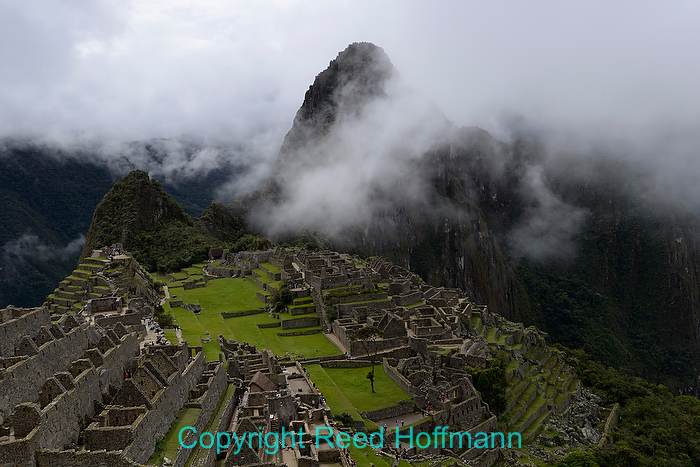This April I’m returning to Peru, which is an exceptional trip and there are still a few spots open. Having led workshops there a few times, I’ve found that while people come for Machu Picchu and the Incan ruins (which are as spectacular as you’ve heard), they find the personal encounters with the people even more powerful. Thanks to the small size of our group and a great local guide, we’ve got the perfect recipe for an excellent adventure. Add to that the fact they’re reducing the amount of time you can visit Machu Picchu in the next year or two, and now’s the time to go! Here’s how we run the trip, day by day, which work out to be ten great reasons to join me:
Day 1 – Fly from the U.S. to Lima, capital of Peru. I love going to South America for several reasons (including great food and friendly people), and one of those is little to no jet lag and an easy flight down. I leave home in the morning and that evening, at my normal bedtime, I’m in my hotel in Lima. Plus that hotel is literally fifty yards from baggage claim, so no hassles getting to/from the airport.
Day 2 – First thing that morning we walk back to the airport for our flight to Cusco, in the heart of the Sacred Valley. Since Cusco is at a high altitude (11,500-ft), we immediately leave and head down into the Sacred Valley (around 9500-ft), to make acclimatizing easier. We’ll stop several times along the way, both for photos and lunch, before ending up at a very nice hacienda for the night. Thanks to the small size of our group, those stops have included everything from brick making (by hand with mud and straw) to corn drying to quinoa harvesting to hat-making, and even tasting the local corn beer. These have been some of my favorite moments, and we do them off and on throughout the trip.

This is one of the unscheduled stops we made along the road, of a family harvesting quinoa. Even the 90-yr-old great-grandfather was helping. Nikon D800, ISO 160, 1/800 at f/8, EV -1.0, Nikkor 24-70mm lens at 24mm. Photo copyright Reed Hoffmann.
Day 3 – We start the morning with a trip to the nearby ruins of Pisac, taking a walking tour through this lovely terraced hilltop retreat. From there we’ll drop down into the town of Pisac itself for lunch and a visit to the colorful local market. Then more touring of the area before returning to our hacienda for dinner and the night.
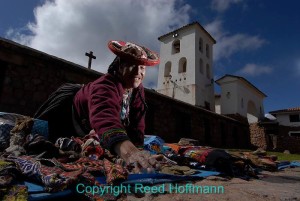
This woman was spreading out her wares in the main square at Chincheros. Nikon D200, ISO 100, 1/250 at f/16, Nikkor 12-24mm lens at 14mm. Photo copyright Reed Hoffmann.
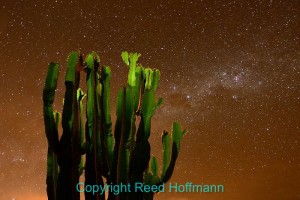
With a clear night, we decided to do a little night photography and light painting at the hacienda. Nikon D800, ISO 4000, 55-seconds at f/5, Nikkor 24-70mm lens at 24mm. Photo copyright Reed Hoffmann.
Day 4 – Another full day of touring, we’ll start by taking our small private bus to Chincheros, a local textile/weaving center where we’ll visit one of the locally owned shops for a demonstration of dyeing and weaving. We’ll also stop by the beautiful church on the square, which is built atop Incan ruins (a common practice at that time). From there we go to Moray and the unique circular ruins, which are believed to have been used as an agricultural research station by the Incans. Finally, we’ll go to the spectacular Salineras, a mountainside that’s been converted into salt pans (pools) over the last millennium by the local people.
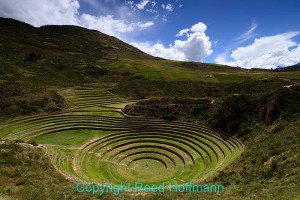
The circular ruins at Moray are believed to have been used by the Incans for agricultural research. Nikon D800, ISO 100, 1/320 at f/8, EV -1.0, Nikkor 16-35mm lens at 18mm. Photo copyright Reed Hoffmann.
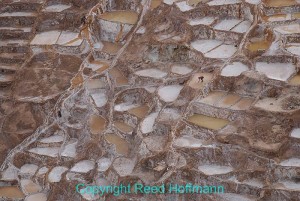
This is a small section of the mountainside at Salineras that has been turned into salt pans for drying salt. Nikon D80, ISO 200, 1/500 at f/3.5, EV -0.3, Nikkor 70-200mm lens at 200mm. Photo copyright Reed Hoffmann.
Day 5 – This morning will be spent exploring the ruins of Ollantaytambo, then after lunch we’ll take the train to Machu Picchu Pueblo (formerly Aguas Caliente). Upon arrival our luggage will to to our hotel and we’ll take the bus up to Machu Picchu. We time it this way so we’re arriving as the daily crowds are starting to head down. That lets us shoot the classic photos with the last light of the afternoon before they chase us out at closing time. Then down to the town for dinner and an early bedtime, to be ready the next morning.
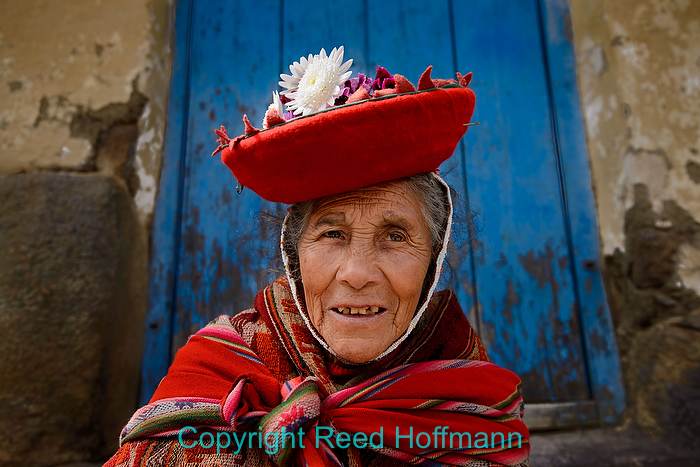
An old woman on a doorstep at Ollantaytambo. I loved the contrast between the red she’s wearing and the blue door behind her. Nikon D610, ISO 200, 1/640 at f/4.5, EV -0.7, Nikkor 16-35mm lens at 26mm. Photo copyright Reed Hoffmann.
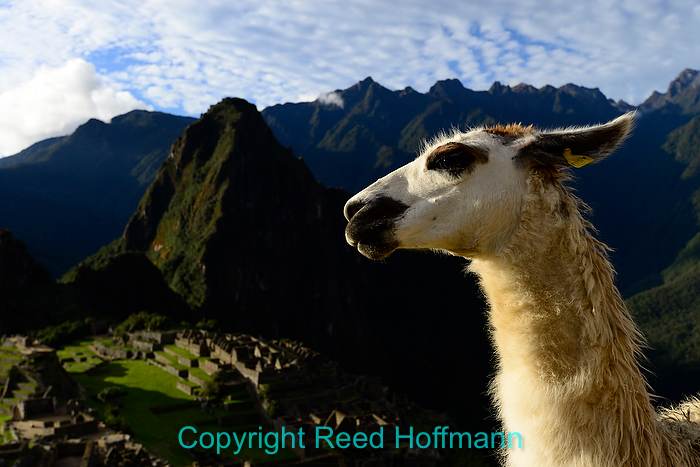
One of Machu Picchu’s resident lawnmowers, late in the afternoon. Nikon D800, ISO 200, 1/500 at f/8, EV -1.3, Nikkor 16-35mm lens at 35mm. Photo copyright Reed Hoffmann.
Day 6 – Up well before dawn, we’ll head out to line up for the first group of buses. That will put us back up at Machu Picchu before the sun rises, so we can shoot in first light. After that, our private guide will take us on an extensive tour of the ruins, explaining the history, culture and archaeology of the area. Doing MP this way means that we’re there at two different times of the day, over two days, which gives us different opportunities with both light and weather. By early afternoon we’re done, and head down to town for lunch before taking the train back and then on to Cusco. We’ll spend two nights there at a lovely former colonial building, now a Novotel.

When we first arrived before sunrise, Machu Picchu was covered in fog. As it lifted, we were treated to beautiful views. Nikon D610, ISO 100, 1/320 at f/8, EV -1.3, Nikkor 16-35mm lens at 32mm. Photo copyright Reed Hoffmann.
Day 7 – This is a free day for us to relax and enjoy Cusco. Being a Sunday, there are often parades or festivals going on in the town square, just a few blocks away. And it’s also a good opportunity to do some shopping, or just get acquainted with the ancient capital of the Incas.
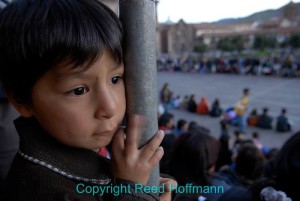
This boy was watching a parade in the town square at Cusco. Nikon D200, ISO 100, 1/20 at f/4.0, EV -0.3, Nikkor 16-35mm lens at 17mm. Photo copyright Reed Hoffmann.
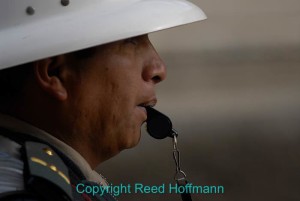
A traffic cop in Cusco. Nikon D200, ISO 250, 1/320 at f/6.3, EV -0.3, Nikkor 80-400mm lens at 400mm. Photo copyright Reed Hoffmann.
Day 8 – One of my favorite days of the trip, we’ll board a luxury train for the day-long ride across the high plains to Puno. Wing-backed chairs, china service, lunch and tea, all while passing through beautiful countryside. Of course, my favorite part of the train is the observation car at the back, which you can shoot pictures from.
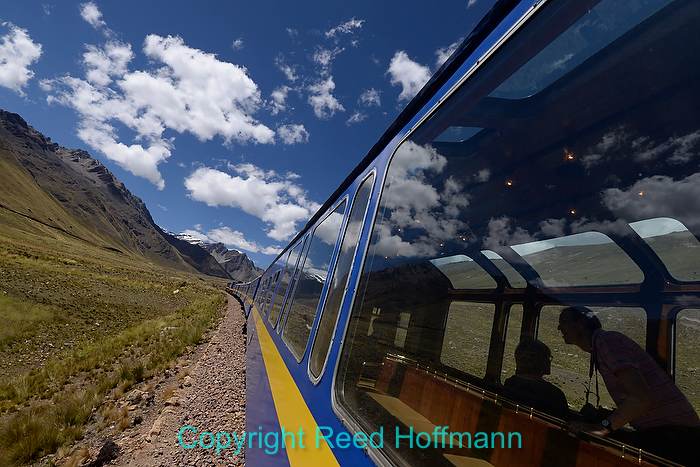
A view from the back of the observation car on our trip to Puno and Lake Titicaca. Nikon D610, ISO 200, 1/1000 at f/8, EV -1.0, Nikkor 16-35mm lens at 16mm. Photo copyright Reed Hoffmann.
Day 9 – This day is spent on lake Titicaca, one of the highest navigable lakes in the world at 12,500-ft and which borders Bolivia. We’ll visit and learn about the Uros islanders, a unique group of people who live on artificial islands they’ve built from floating reeds. After that our boat will take us out to Tacquile island where a local family will prepare and serve us lunch. After a tour of the island (by foot, you can choose the short or long one), we’ll return to Puno.
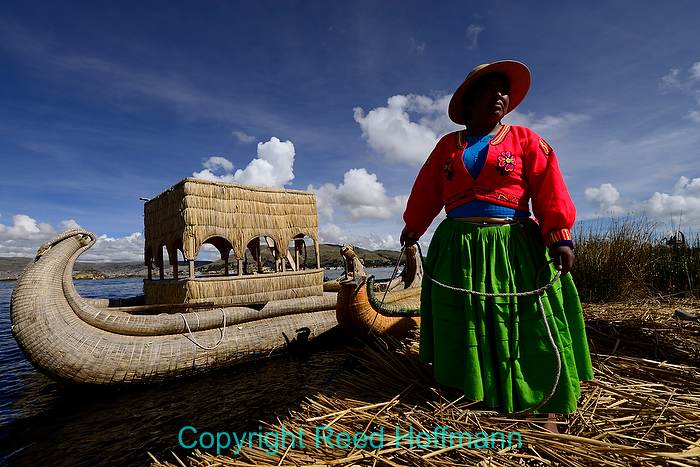
One of the Uros islanders waits for us to board her boat for a short sightseeing cruise. Nikon D800, ISO 100, 1/800 at f/8, EV -1.3, Nikkor 16-35mm lens at 16mm. Photo copyright Reed Hoffmann.
Day 10 – Our last full day in Peru begins early with a visit to the circular burial towers of Silustani. These pre-date the Incans, and are impressive both for their careful construction as well as longevity. Then it’s off to the Juliaca airport for our flight back to Lima. You’ll then have the afternoon free, to tour some of the sights there, get a day room at the hotel or just hang out at the airport until the flights home that night.
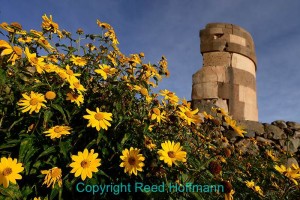
One of the unfinished burial chambers at the Silustani ruins. Nikon D800, ISO 100, 1/200 at f/10, EV -1.0, Nikkor 16-35mm lens at 20mm. Photo copyright Reed Hoffmann.
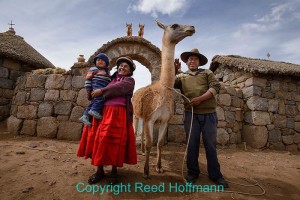
On our final morning, we visited a family’s farm where they gave us a tour of their home. Nikon D610, ISO 200, 1/400 at f/8,EV -0.7, Nikkor 16-35mm lens at 16mm. Photo copyright Reed Hoffmann.
As you can see, it’s a wonderful trip to one of the most unique places in the world, a great blend of landscape and people photography, and I hope you can join me on it. I teach to all levels, from beginner to advanced, and work hard to make sure everyone has a good time and comes home with great pictures. If you have questions, please email me at reed@reedhoffmann.com. The trip is organized by my friends at Pack Paddle Ski, and here’s their link: http://tinyurl.com/hsx2rn4.

